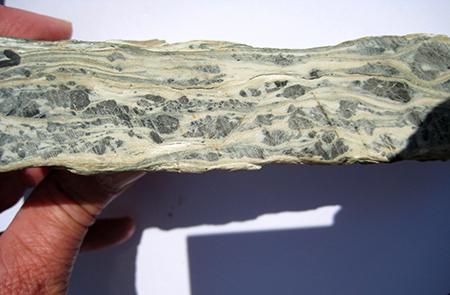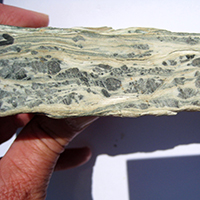 Professor John Wheeler: “These calculations show that we need to reappraise how we interpret minerals which grew within the Earth”
Professor John Wheeler: “These calculations show that we need to reappraise how we interpret minerals which grew within the Earth”
A study by the University of Liverpool has provided new insight into how minerals grow under the Earth’s surface.
Using new calculations, a researcher in the School of Environmental Sciences was able to predict that the difference in stress acting on a rock in various directions has played a more significant role in influencing the growth of minerals in the Earth’s crust and mantle than was previously supposed.
Basis of our understanding
Minerals are formed under the earth’s surface as a result of geological influences such as heat, pressure and fluid interaction and therefore provide the basis of our understanding of the science of the earth.
They can be used to fingerprint the temperature and pressure at the time they grew. A diamond, for example, can grow only at pressures of greater than 40,000 atmospheres – in the same way that ice can form from water only below 0 degrees Celsius.
“It has previously been assumed the effects of differential stress on mineral growth are small. But now I have shown that changing the stress (applied force per unit area on which it acts) in
one direction by, say, 500 atmospheres might have an effect equivalent to changing the overall pressure by 5000 atmospheres”.
“These calculations mean that current estimates made by geologists for burial depths could be 20 km or more above or below their true values, and temperature estimates could be 100 degrees C above or below the actual values when minerals grew. So we need to revitalise our approach to what minerals tell us”.
Density differences
Stresses result from density differences within the Earth and movement of tectonic plates and can be hundreds of atmospheres different in value, depending on the direction of the stress. As stress is applied slowly over time, rocks deform and change shape forming aligned mineral textures which are very common.
The theory also has an impact on the understanding of metals which, like rocks, are interlocked crystals of different chemistries and are often processed by deformation which, as in rocks, occurs in parallel with chemical change.
The research, funded by the Natural Environment Research Council, is published in Geology.
